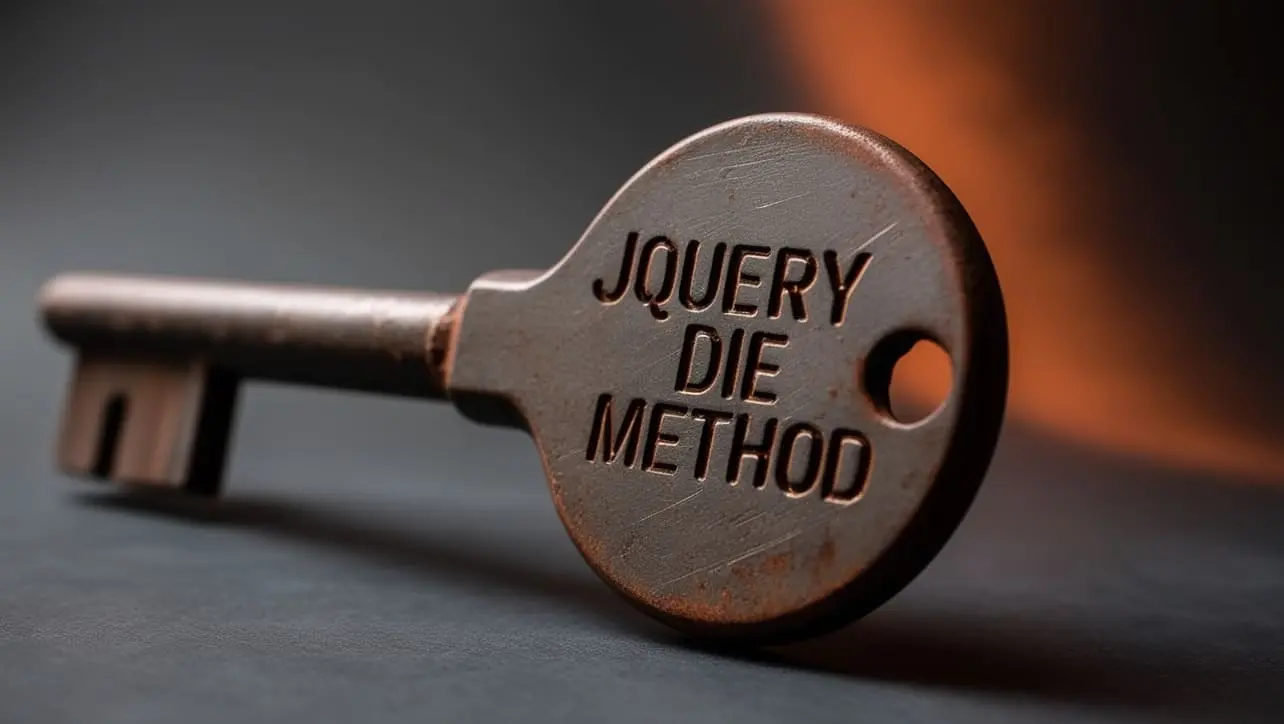
jQuery Topics
- jQuery Introduction
- jQuery Callbacks
- jQuery deferred
- jQuery selectors
- jQuery Ajax Events
- jQuery Ajax Methods
- jQuery Keyboard Events
- jQuery Keyboard Methods
- jQuery Form Events
- jQuery Form Methods
- jQuery Mouse Events
- jQuery Mouse Methods
- jQuery Event Properties
- jQuery Event Methods
- jQuery HTML
- jQuery CSS
- jQuery Fading
- jQuery Traversing
- jQuery Utilities
- jQuery Properties
jQuery .die() Method

Photo Credit to CodeToFun
🙋 Introduction
In jQuery, event handling plays a crucial role in creating interactive web pages. The .die() method is a significant part of event handling, allowing you to unbind or remove event handlers attached to elements. Understanding how to use .die() effectively can help you manage event handling in your web projects more efficiently.
In this guide, we'll explore the .die() method with clear examples to illustrate its usage and benefits.
🧠 Understanding .die() Method
The .die() method is used to remove event handlers attached to elements previously bound with the .live() or .delegate() methods. It's particularly useful in scenarios where you need to dynamically add and remove event handlers from elements.
💡 Syntax
The syntax for the .die() method is straightforward:
$(selector).die(eventType);📝 Example
Removing Event Handlers:
Suppose you have a button with an event handler attached using .live(), and you want to remove this handler:
index.htmlCopied<button id="myButton">Click me</button>example.jsCopied// Binding event handler using .live() $("#myButton").live("click", function() { console.log("Button clicked!"); }); // Removing event handler using .die() $("#myButton").die("click");In this example, the event handler attached to #myButton is removed when
.die()is called with the event type "click".Using .die() with .live() or .delegate():
You can also use
.die()in conjunction with .live() or .delegate() to selectively remove event handlers. For instance:example.jsCopied// Binding event handler using .live() $("body").live("click", "#myButton", function() { console.log("Button clicked!"); }); // Removing event handler using .die() $("#myButton").die("click");Here, the event handler attached to #myButton is removed, but other event handlers attached using .live() to elements within the body are unaffected.
Handling Multiple Event Types:
You can also remove multiple event handlers by specifying multiple event types:
example.jsCopied$("#myElement").die("click mouseover");This will remove both the "click" and "mouseover" event handlers attached to #myElement.
Targeting Specific Event Handlers:
To remove specific event handlers when multiple handlers are attached to the same element, you can use namespaces:
example.jsCopied$("#myElement").die("click.myNamespace");This will only remove event handlers with the specified namespace, leaving others intact.
🎉 Conclusion
The .die() method in jQuery provides a convenient way to remove event handlers previously attached using .live() or .delegate(). By understanding how to use .die() effectively, you can manage event handling in your web projects more efficiently, ensuring cleaner code and better performance.
Whether you need to remove event handlers dynamically or selectively target specific handlers, .die() empowers you to handle event management with ease.
👨💻 Join our Community:
Author

For over eight years, I worked as a full-stack web developer. Now, I have chosen my profession as a full-time blogger at codetofun.com.
Buy me a coffee to make codetofun.com free for everyone.
Buy me a Coffee












If you have any doubts regarding this article (jQuery .die() Method), please comment here. I will help you immediately.